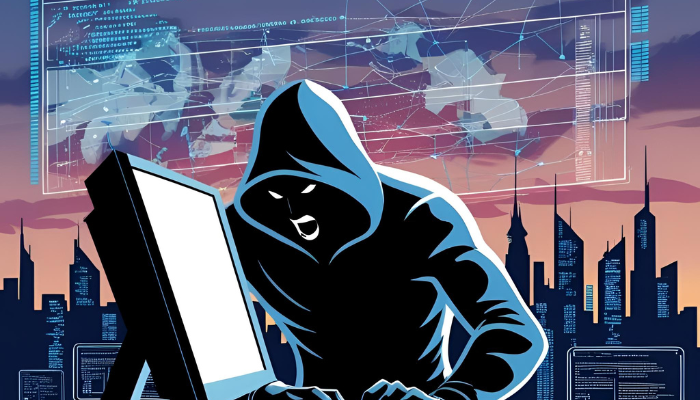In today’s hyperconnected world, cyberattacks have emerged as one of the most pressing threats to global security, businesses, and individual privacy. From data breaches and ransomware attacks to sophisticated state-sponsored espionage, the digital landscape is under constant threat. Understanding cyberattacks, their types, impacts, and methods of prevention is crucial in defending against this invisible enemy.
What is a Cyberattack?
A cyberattack is a deliberate exploitation of computer systems, networks, and technologies to gain unauthorized access, steal data, disrupt operations, or cause damage. These attacks are carried out by individuals, criminal groups, or nation-states using various techniques to bypass security measures.
Types of Cyberattacks

Zero-Day Exploits
These attacks take advantage of software vulnerabilities that are unknown to the vendor. Because there’s no fix available, zero-day exploits are highly dangerous.
Phishing Attacks
Phishing involves tricking individuals into clicking malicious links or providing sensitive information such as passwords or bank details. Often delivered via email, these attacks are the most common entry points for hackers.
Ransomware
In a ransomware attack, hackers encrypt a victim’s data and demand payment, usually in cryptocurrency, to restore access. High-profile ransomware cases have disrupted hospitals, schools, and even government services.
Distributed Denial of Service (DDoS)
A DDoS attack overwhelms a website or online service with traffic, making it inaccessible. These attacks are often used to blackmail companies or as a smokescreen for other malicious activities.
Malware
Malware includes viruses, worms, spyware, and trojans designed to damage, disrupt, or gain unauthorized access to systems. It can be delivered through downloads, websites, or infected USB drives.
Man-in-the-Middle (MitM) Attacks
In MitM attacks, attackers intercept communication between two parties to steal data or inject malicious content. These often occur on unsecured public Wi-Fi networks.
SQL Injection
This attack involves inserting malicious SQL code into a database query, allowing attackers to access, modify, or delete data from a database.
Motivations Behind Cyberattacks
- Financial Gain: Cybercriminals often aim to steal money or data that can be sold on the dark web.
- Espionage: State-sponsored actors may seek classified information from rival nations.
- Hacktivism: Groups like Anonymous conduct cyberattacks to protest against political or social issues.
- Disruption and Sabotage: Some attacks aim to cripple infrastructure, disrupt services, or sow chaos.
- Revenge or Personal Grievances: Disgruntled employees or individuals may launch attacks to damage their former employers or associates.
Real-World Examples of Cyberattacks
- WannaCry (2017): A ransomware attack that affected over 200,000 computers in 150 countries, targeting NHS hospitals in the UK and other institutions.
- SolarWinds Hack (2020): A sophisticated supply chain attack allegedly carried out by a Russian group that compromised U.S. government agencies and major corporations.
- Colonial Pipeline Attack (2021): A ransomware attack that disrupted fuel supply across the U.S. East Coast and led to widespread panic buying.
Impact of Cyberattacks
- Financial Losses: Businesses face huge financial losses due to ransom payments, legal penalties, and downtime.
- Data Breaches: Stolen personal and financial information can lead to identity theft and fraud.
- Reputational Damage: Companies lose customer trust and face long-term brand damage.
- Operational Disruption: Attacks can halt operations, especially in critical infrastructure like healthcare and energy.
- National Security Risks: State-sponsored attacks can compromise defense systems and sensitive government information.
How to Protect Against Cyberattacks
- Use Strong Passwords: Always use complex, unique passwords and update them regularly.
- Enable Multi-Factor Authentication (MFA): Adds an extra layer of security beyond just passwords.
- Regular Software Updates: Always update operating systems and software to patch vulnerabilities.
- Install Antivirus and Firewalls: These tools help detect and block malicious activity.
- Educate Employees: Human error is a major factor in cyberattacks. Regular training helps employees recognize phishing and other threats.
- Data Encryption: Encrypt sensitive data at rest and in transit to prevent unauthorized access.
- Backup Data Frequently: Ensure data is backed up regularly to recover quickly from ransomware or other disasters.
- Conduct Security Audits: Regular assessments help identify and fix security gaps.
Cybersecurity Laws And Regulations
Many countries have enacted laws to combat cybercrime:
- GDPR (EU): Governs data protection and privacy.
- Cybersecurity Information Sharing Act (U.S.): Encourages sharing of threat information between government and businesses.
- IT Act 2000 (India): Provides legal recognition for e-commerce and penalizes cybercrime.
Conclusion
Cyberattacks are no longer limited to hackers sitting in basements; they are well-funded, well-organized operations often backed by nations or powerful criminal networks. As digital transformation accelerates, so too must our commitment to cybersecurity. It’s no longer a choice—it’s a necessity. Whether you’re an individual, a business, or a government, awareness, vigilance, and proactive defense are the keys to staying safe in the digital world.
Also Read: Meta Introduces AI-Powered App With Voice Assistant











